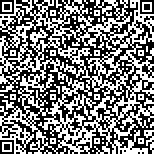本文已被:浏览 632次 下载 514次
投稿时间:2018-11-16 网络发布日期:2019-09-24
投稿时间:2018-11-16 网络发布日期:2019-09-24
中文摘要: 目的研究经皮肾镜碎石取石术(PCNL)术后残石对术后感染的影响,探讨肾盂尿及结石细菌培养阳性对于PCNL术后残石阳性的患者是否进一步增加感染的风险。方法回顾性分析2013年6月至2018年6月328例采用PCNL治疗肾结石患者的临床数据及实验室检查结果,所有患者术后均记录全身炎症反应综合征(SIRS)相关指标,统计PCNL术后患者的残石状态,结合肾盂尿及结石细菌培养结果,分析肾盂尿及结石细菌培养阳性的残石对术后感染并发症的影响。结果48例患者术后SIRS阳性,所有PCNL患者中SIRS阳性患者男性比例高于阴性患者(P=0.039),发生SIRS的患者中鹿角形结石的比例最高,而未发生SIRS的患者中多以单发性结石多见,但差异无统计学意义(P=0.117)。相较于SIRS阴性的患者,发生SIRS的患者术中冲水量更多、输血比例增加、住院时间也更长(P<0.01)。SIRS阳性患者术后残石率高于SIRS阴性患者(P=0.004),术中肾盂尿和/或结石培养阳性率也高于SIRS阴性患者(P=0.001)。在PCNL残石阳性的患者中,SIRS阴性与SIRS阳性患者肾盂尿和/或结石培养阳性率无统计学差异(P=0.802)。结论PCNL术后残石、肾盂尿和/或结石细菌培养阳性是PCNL术后SIRS发展的危险因素,但肾盂尿和/或结石细菌培养阳性对PCNL残石阳性的患者SIRS的发展并不具有叠加效应。
Abstract:Objective To study the influence of residual stones after percutaneous nephrolithotomy (PCNL) on postoperative infection and explore whether positive renal pelvis urine culture (RPUC) and/or stone bacterial culture (SC) could further increase the risk of infection in patients with positive residual stones after PCNL. Methods The clinical data and of 328 patients with renal calculi treated with PCNL in recent 5 years were retrospectively analyzed.The systemic inflammatory response syndrome (SIRS)-related indicators and the residual stone status were observed and recorded for all patients after PCNL.The influences of rsesidual stones with positive bacterial culture and RPUC on postoperative infection were analyzed. Results Postoperative positive SIRS occurred in 48 patients,in whom the proportion of male patients was higher than that of male patients(P=0.039),and the stone load was also higher than that in patients with negative SIRS (P=0.008).Staghorn calculi were the most common in patients with SIRS,while single calculi were the most common in patients without SIRS,but there was no significant difference in it (P=0.117).Compared with patients with negative SIRS,the patients with SIRS required more flushing water during operation,higher blood transfusion and longer hospitalization time (P<0.01).The rate of postoperative residual stone (P=0.004),the positive rate of intraoperative pelvic urine and/or stone culture(P=0.001) in SIRS patients were statistically higher than those in negative SIRS patients.In PCNL patients with positive residual stone,there was no significant difference in the positive rate of pelvic urine and/or stone culture between negative SIRS and positive SIRS patients (P=0.802). Conclusion Positive bacterial culture of residual stones,pelvis urine and/or stones is a risk factor for SIRS after PCNL.However,positive bacterial culture of pelvis urine and/or stones have no superimposed effects on development of SIRS in patients with residual stones after PCNL.
keywords: Percutaneous nephrolithotomy Systemic inflammatory response syndrome Residual stones Stone bacterial culture Renal pelvis urine culture
文章编号: 中图分类号:R 692.4 文献标志码:B
基金项目:
| Author Name | Affiliation |
| YANG Yuan-qiang,YU Jia,XU Jian-hua,XIAO Rong | Department of Urology,Nanjing Jiangbei People's Hospital Affiliated to Nantong University,Nanjing,Jiangsu 210048,China |
引用文本:
杨元强,于佳,徐建华,肖荣.肾盂尿及结石细菌培养阳性的经皮肾镜碎石取石术残石与感染并发症相关性[J].中国临床研究,2019,32(9):1242-1245.
杨元强,于佳,徐建华,肖荣.肾盂尿及结石细菌培养阳性的经皮肾镜碎石取石术残石与感染并发症相关性[J].中国临床研究,2019,32(9):1242-1245.
